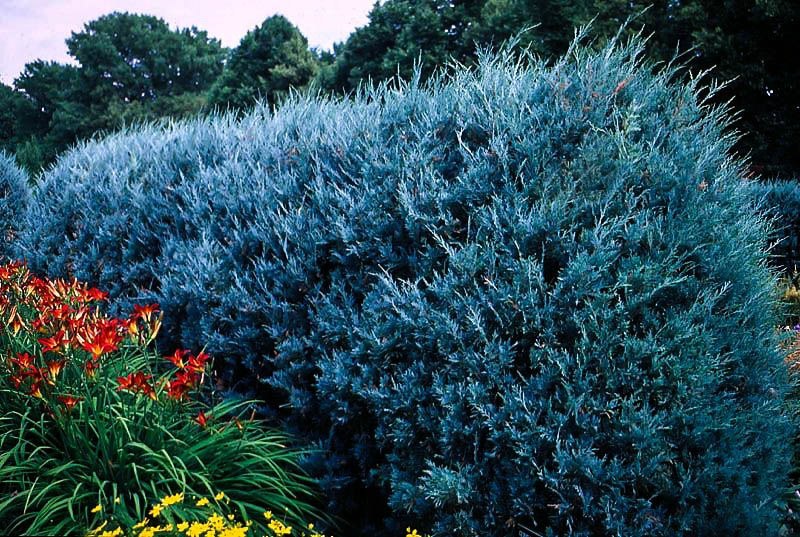
Like Phomopsis, Kabatina blight is spread by "splashing" water caused by rainfall and overhead irrigation. The disease stops with the heat of summer. Cankers may girdle the base of the shoots.

Infected shoot tips are dull green, then turn reddish or yellow before dying. Kabatina also causes the juniper to appear sickly, but the disease does not normally kill the plant. Kabatina infects junpers in late winter or early spring, before Phomopsis develops. Often mistaken for Phompsis blight, Kabatina twig blight is best differentiated from Phomopsis by the time of year it attacks Wichita blue junipers. Check the label to make sure the fungicide is formulated to control or prevent Phomopsis, and follow instructions for proper application timing and rates. If the infection is severe, affecting large areas of the plant, apply a fungicide to help control the spread. Prune away dead areas, thinning branches and stems, if needed, to improve air circulation so the foliage dries more quickly. Avoid overhead watering, and improve drainage if water from irrigation or heavy rains stands around the base of the juniper for more than a few hours.

Keep trees healthy and do not over- or under-water the juniper. The damage is mostly aesthetic, and healthy trees resist the disease. As the infection spreads, the shoots die and cankers form, girdling and killing shoots and stems. Phompsis blight causes yellowing, chlorotic new shoots in the spring and early summer. Too much fertilizer is one cause of the disease, as are wet, humid weather and over-pruning the plant. Wichita blue juniper is particularly susceptible to Phomopsis. No fungicides are available to combat Botryosphaeria. To prevent infections, water the juniper from the bottom, remove weeds and other plant debris and sanitize pruning tools and other gardening equipment before using it on the Wichita blue juniper. Healthy trees usually do not suffer from Botryosphaeria infections. Spores lurk in the sunken, dark cankered areas and are spread by splashing water from heavy rainfall and overhead irrigation. Often arising only after severe weather-related problems weaken a Wichita blue juniper, Botryosphaeria stevensii causes yellowing foliage, cankers and dieback.


 0 kommentar(er)
0 kommentar(er)
